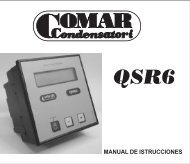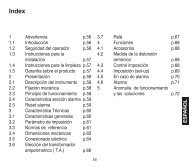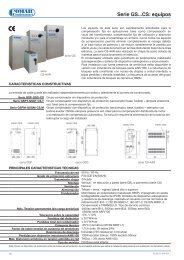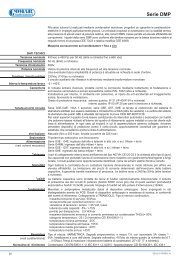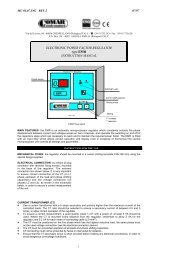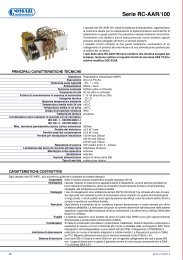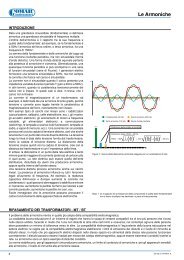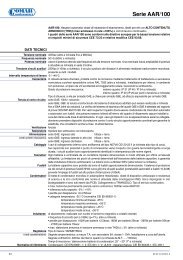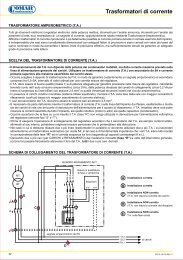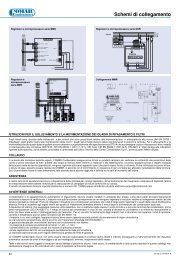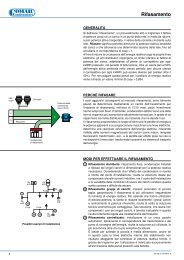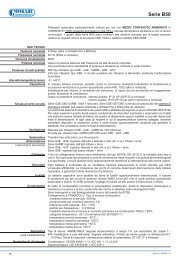SAFACTIVE FILTER - COMAR CONDENSATORI SpA
SAFACTIVE FILTER - COMAR CONDENSATORI SpA
SAFACTIVE FILTER - COMAR CONDENSATORI SpA
You also want an ePaper? Increase the reach of your titles
YUMPU automatically turns print PDFs into web optimized ePapers that Google loves.
So:<br />
‣ it recognizes and compensates all the current up to the 50 th harmonic order<br />
‣ it has excellent dynamic response to fast load variation<br />
‣ it compensates if network features change due to new machinery or equipment in the installation<br />
‣ it is impossible to overload<br />
‣ it’s easy to size<br />
‣ every module is easily connected<br />
‣ it fits every kind of load so it will not be obsolete<br />
These good performance of SAF, with the possibility to connect it to existing an installation and its<br />
modular design allows the filter to give the right solution for every problem with harmonic pollution,<br />
in every kind of condition.<br />
Current from a non linear load (top)<br />
and his relative filtered current (bottom)<br />
Operating mode<br />
The active filter is based on “compensation”, that means that in order to eliminate in a three phase<br />
system the harmonic current absorbed by the non linear load, the filter from the current of the load,<br />
calculates and injects the same harmonics (over the fundamental) shifted by 180 degrees. It results in a<br />
complete elimination from the installation of the dangerous component of the current.<br />
Figure 1<br />
LOAD<br />
Active Filter operation scheme<br />
At the same way it is possible to have a power factor correction of the load, producing three sinusoidal shaped<br />
current waveforms, with an amplitude in line with the load.<br />
In order to understand how SAF operates, look at the picture below there are three different blocks, each one<br />
showing different operating stages of the Active Filter:<br />
6 http://www.comarcond.com



